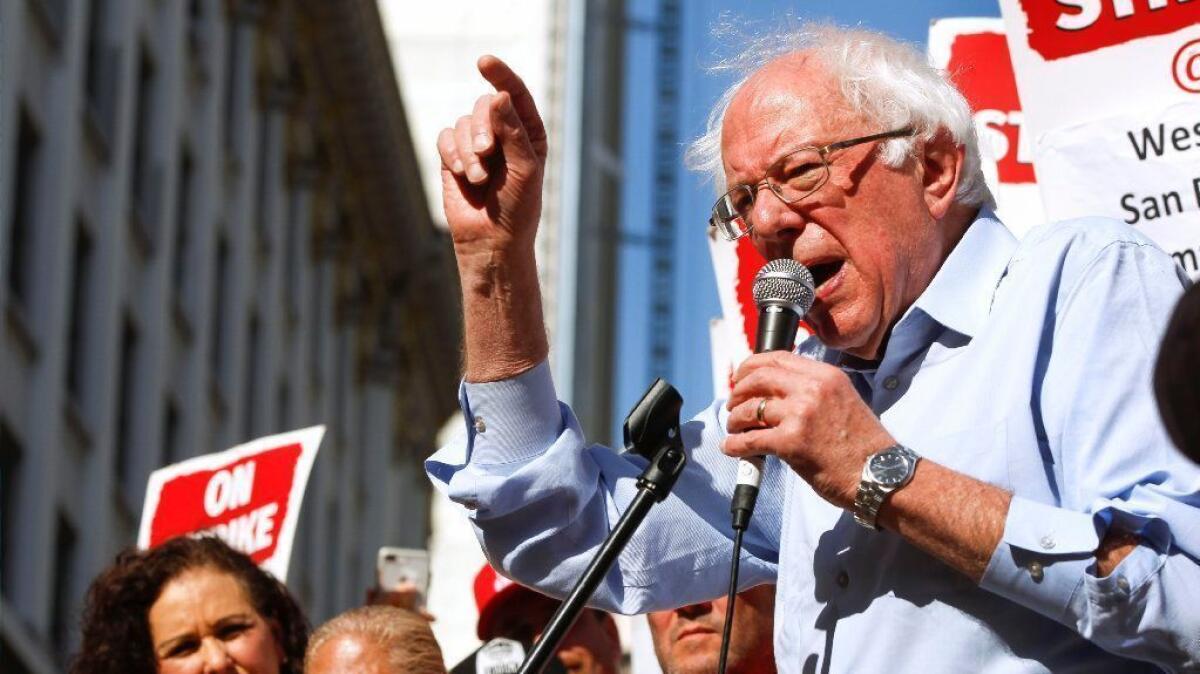Dizzying array of dollar signs: Cutting through the hype on 2020 presidential fundraising

So much money. It comes in tiny increments online. It comes in big checks written for fancy fundraisers. It comes from Wall Street brokers and from retired schoolteachers on meager pensions. But what does it all mean for the presidential candidates raising it?
By midnight Monday, all the declared presidential candidates must publicly provide their first look at who is giving to them, in what amounts, and how much it all adds up to, as well as what they’ve spent. (The most flush candidates already have shared some of their top-line numbers. ) The snapshot is helpful in interpreting who might have the resources to go the distance, who has strong grassroots enthusiasm behind them, and who has figured out how to expand their reach in the digital age.
It is also a great opportunity for candidates to mislead you. The numbers are confusing, and the story the numbers tell is always more nuanced than the story the candidates try to build.
Don’t get duped by the dollar signs. Here are answers to some of the key questions about all that cash.
There’s a lot of talk about refusing corporate money. Have Democrats really gone cold turkey?
No. All the Democratic candidates have vowed not accept money from corporate PACs, and most are also refusing federal lobbyist donations. The optics of the pledge are great. But in reality, there are many other ways candidates can collect from big corporate interests without tapping PACs. A CEO or group of lobbyists can hold a fundraiser for candidates in their living room. Corporate trade associations might still give. Many candidates are still eagerly engaging the help of so-called bundlers, well-connected fundraisers who can work their networks of wealthy friends and associates to harvest big bucks for the campaign.
Some candidates, notably Sens. Bernie Sanders and Elizabeth Warren, are eschewing the loopholes and strictly avoiding corporate cash and fundraisers. But many others remain stars in the corporate fundraising circuit.
So many candidates talk as if they only raise money from small donors. Should I believe them?
Be careful. The candidates slice and dice their numbers to leave the impression their operations are entirely grassroots driven. Not all are. A candidate could have 90% of their donors giving modest amounts and still be dependent on the much smaller group of high rollers for the majority of the cash. The key figure to look for is how much of the total raised comes from small donors. A donor list with a big percentage of small contributors is not that meaningful if those donors don’t ultimately account for most of the money.
Why all the emphasis on small donors, anyway? It’s all just cash in the end, right?
Not exactly. There are legal limits to how much an individual can give a candidate — $2,800 per donor, for the entire primary season. Big donors hit the limit quickly, so candidates who rely on them don’t have a well to return to. Small donors can give again and again, and often do. That is why Sanders is positioned well, having raised more than $18 million, at an average of $20 per donation. Beyond that, a huge small-donor network reflects a potent grassroots movement. Donors are the same people who are likely to volunteer, enlist their friends to vote for the candidates, plant a lawn sign.
Lots of folks are chipping in a buck or so to multiple candidates. What’s up?
It is all about the debates. One way to get a spot on the stage is to amass 65,000 donors. Lesser known candidates are frantically trying to reach that number, and they are successfully pleading with people to just throw a token dollar their way.
Pete Buttigieg seems awful proud of that $7 million. Should he be?
It is nothing to sneeze at. One of the big surprises of this race so far is how the mayor of South Bend, Ind., went from unknown to big-league candidate. The $7 million he raised is a good benchmark from which to judge the others who entered the race with much higher name recognition and big donor networks.
What is this talk about “average fundraising per day”? Should I care about that?
Probably not. Sure, candidates who were in the race at the start of the quarter had more days to raise funds. But the day a candidate jumps into the race typically eclipses the amount raised every other day. Beto O’Rourke boosters who insist he might have doubled his $9.4 million for the quarter had he only gotten into the race sooner aren’t accounting for the fact that two-thirds of his haul came on a single day. And launch day happens only once.
What the heck is a burn rate?
It is how quickly candidates are burning through the cash that comes in. Blowing it all too fast has been known to sink promising candidates.
Money isn’t everything. Why should I even look at these numbers?
You are right. We’ve seen lots of candidates win the money race and then face-plant on election day. (See: Bush, Jeb). So a hulking bank account is certainly not the be all and end all. But in an era in which unprecedented amounts are coming from small donors, the financial reports provide one of the best indicators of which candidates have the most enthusiasm behind them as the race gets underway.
More to Read
Sign up for Essential California
The most important California stories and recommendations in your inbox every morning.
You may occasionally receive promotional content from the Los Angeles Times.











